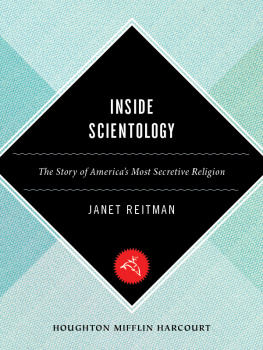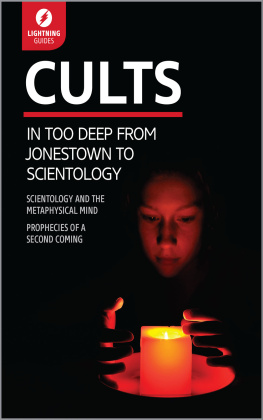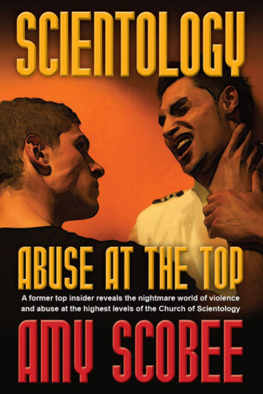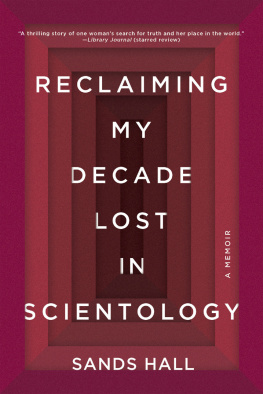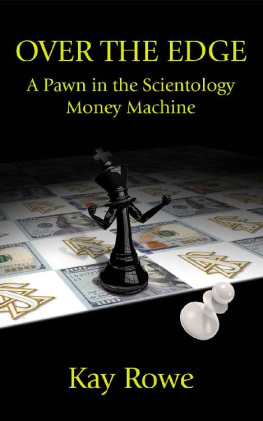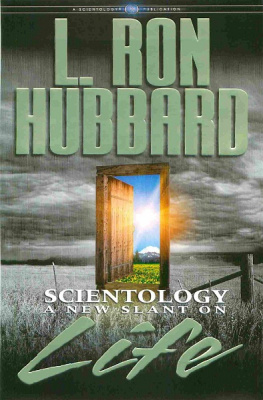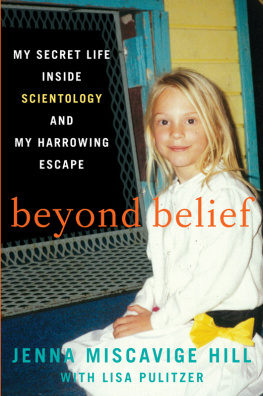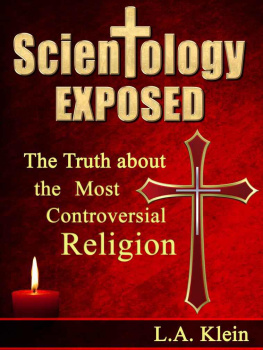HOUGHTON MIFFLIN HARCOURT | Boston | New York
2011
Copyright 2011 by Janet Reitman
ALL RIGHTS RESERVED
For information about permission to reproduce selections from this book,
write to Permissions, Houghton Mifflin Harcourt Publishing Company,
215 Park Avenue South, New York, New York 10003.
www.hmhbooks.com
Library of Congress Cataloging-in-Publication Data
Reitman, Janet.
Inside scientology: the story of America's most secretive religion / Janet Reitman.
p. cm.
Includes bibliographical references and index.
ISBN 978-0-618-88302-8
1. ScientologyUnited States. 2. United StatesReligion. I. Title.
BP 605. S 2 R 45 2011
299'.936dc22 2010049837
Book design by Melissa Lotfy
Printed in the United States of America
DOC 10 9 8 7 6 5 4 3 2 1
For my father, and for Lee
with love...
Contents
Introduction: The World's Fastest-Growing Religion
PART I
1. The Founder
2. Dianetics
3. The Franchised Faith
PART II
4. The Bridge to Total Freedom
5. Travels with the Commodore
6. Over the Rainbow
7. DM
8. Power Is Assumed
PART III
9. Lisa
10. Flag
11. Seventeen Days
12. The Greatest Good
PART IV
13. The Celebrity Strategy
14. The Seduction of Tom Cruise
15. The Bubble
16. Int
17. Exodus
Epilogue: What Is True for You
Notes
Selected Bibliography
Acknowledgments
Introduction
The World's Fastest-Growing Religion
T HE LIMESTONE AND granite Church of Scientology in midtown Manhattan is located just northwest of Times Square, at 227 West 46th Street. Blending in seamlessly amid Broadway theaters, restaurants, and hotels, the place is very easy to miss, though it is seven stories tall and marked with a large metal awning proclaiming SCIENTOLOGY in gold letters. At various times during the year, clusters of attractive young men and women are posted on nearby street corners, where they offer free "stress tests" or hand out fliers. Ranging in age from the late teens to the early twenties, they are dressed as conservatively as young bank executives.
On a hot July morning several years ago, I was approached by one of these clear-eyed young men. "Hi!" he said, with a smile. "Do you have a minute?" He introduced himself as Emmett. "We're showing a film down the street," he said, casually pulling a glossy, postcard-sized flier from the stack he held in his hand. "It's about Dianeticsever heard of it?"
I looked at the handout, which featured a large, exploding volcano, instantly familiar from the Dianetics commercials that played on local television stations when I was a teenager. The flier, which invited me to come and see the free introductory film ("Showing Now! Bring Your Friends!"), proclaimed that Dianetics: The Modern Science of Mental Health was "the most popular book on the mind ever written" and a bestseller for over fifty years, with "over 25 million copies in circulation in 50 languages on Earth."
"Okay," I said.
"Great!" A huge grin spread across Emmett's face. He escorted me across the street.
Inside the church, two young women in long skirts stood by the reception desk. Like Emmett, they seemed to be about twenty, had blond hair, and looked freshly scrubbed, reminding me of Mormon missionaries. They led me down a set of marble steps, and we entered the main lobby, a large glossy space with lighting that bathed everything in a pinkish-golden glow. Aside from my guides and me, it was completely empty.
The room appeared to be set up as a Scientology museum. Books by Scientology's founder L. Ron Hubbardmore than fifty of them lined the walls, as did black-and-white photos of the man, all presenting him as a robust patriarch with graying sideburns and a benevolent smile, dressed in a sports jacket and ascot.
But far more prominent than Hubbard was Tom Cruise. Projected on a large video panel, his image dominated the space: earnest, handsome, dressed in a black turtleneck, looking directly into a camera and apparently giving a testimonial to the faith. What Cruise was actually saying, however, I couldn't tell. His words were almost completely drowned out by the sound of myriad other videos playing simultaneously nearby. The Church of Scientology, unlike other houses of worship, did not invite somber reflection on its beliefs but rather offered a technological wonderland: music videos promoting the group's Youth for Human Rights campaign played alongside infomercials extolling the wonders of Dianetics, which appeared alongside videos and documentary-style reports on the great work of Scientology's "volunteer ministers" at Ground Zero, which played next to a video of Tom Cruise receiving an award for outstanding service.
I was escorted into a small screening room to watch the free introductory film. This turned out to be a high-quality, rather long infomercial featuring a cast of ostensibly real people who explained how Dianetics had changed their lives and improved their health dramatically, curing them of ailments ranging from brain cancer to depression. It was fifteen minutes of fantastic and totally outlandish claims, and yet each testimonial was presented in such a reasonable way that in spite of myself, I felt kind of hopeful.
After the film, a woman came into the screening room and told me that she'd like me to fill out a questionnaire. Laurie, as she introduced herself, was a matronly woman of about fifty. She began her pitch gently. "Tell me about yourself," she said. "What made you interested in Scientology?"
Over the next hour or so, Laurie asked me a series of questions: Was I married? Was I happy? What were my goals? Did I feel like I was living up to my potential? She exuded warmth and was resolutely nonaggressive. And to my amazement, I began to open up to her, telling her about my relationship with my boyfriend and my desire to quit smoking.
In response, Laurie delivered a soft sell for Scientology's "introductory package": a four-hour seminar and twelve hours of Dianetics auditing, a form of counseling that cost $50. "You don't have to do it," Laurie said. "It's just something I get the feeling might help you." She patted my arm.
Laurie also had me take the two-hundred-question Oxford Capacity Analysis, Scientology's well-known personality test, which poses such questions as "Do you often sing or whistle just for the fun of it?" and "Do you sometimes feel that your age is against you (too young or too old)?" After looking at my test, Laurie told me that I had "blocks" in communication but was basically confident, though I did seem to suffer from nonspecific anxiety. "These are all things we can help you with," she said, and smiled. "It's really such a good thing you came in," she added, as she took my credit card. "You'll see."
On Monday, I returned to the church to begin my $50 package. My partner in auditing was named David. Sitting down across from me, he asked me to "relive" a moment of physical pain. "Don't choose something that's too stressful," he suggested.
I closed my eyes and concentrated, but try as I might, I could not relive much of anything. After fifteen minutes, I gave up.
Waiting just outside the room was Jane, a Scientology registrar who told me she was now handling my "case." A redhead dressed in jeans and a lightweight blouse, she asked me how it went. "I'm not sure this is for me," I told her.
"A lot of people feel that way when they first start auditing; it's not unusual," Jane said soothingly, all the while steering me away from the exit. She walked me down a long hall and into her office, where, on her desk, lay the results of my personality test. Jane studied them a bit. "What you need is something more personal," she said. She suggested Life Repair, a $2,000 package of one-on-one private auditing sessions, which she said would help me handle my everyday problems. Then, after I finished Life Repair, which could take a month or so, I could get right to The Bridge to Total Freedom, which, Jane explained, was how people really made gains, or had "wins," as she called them.
Next page
